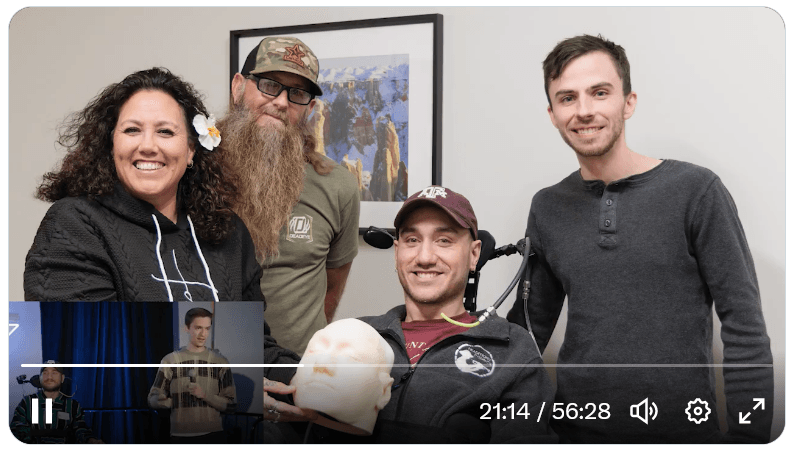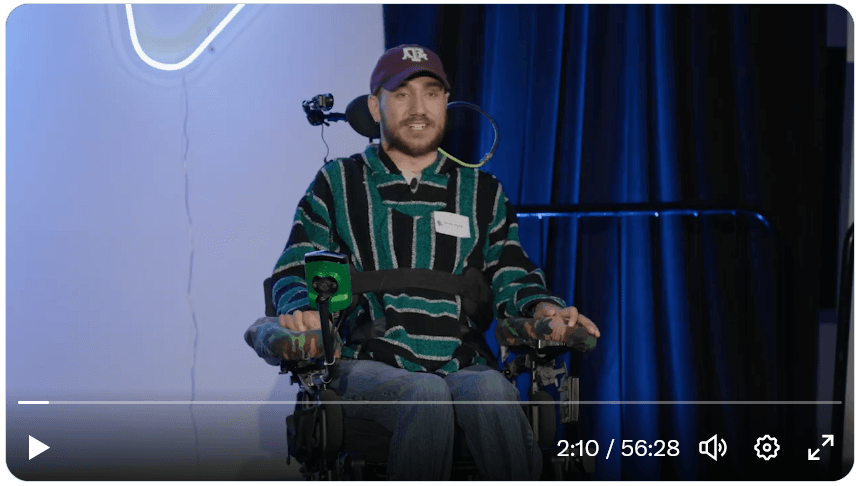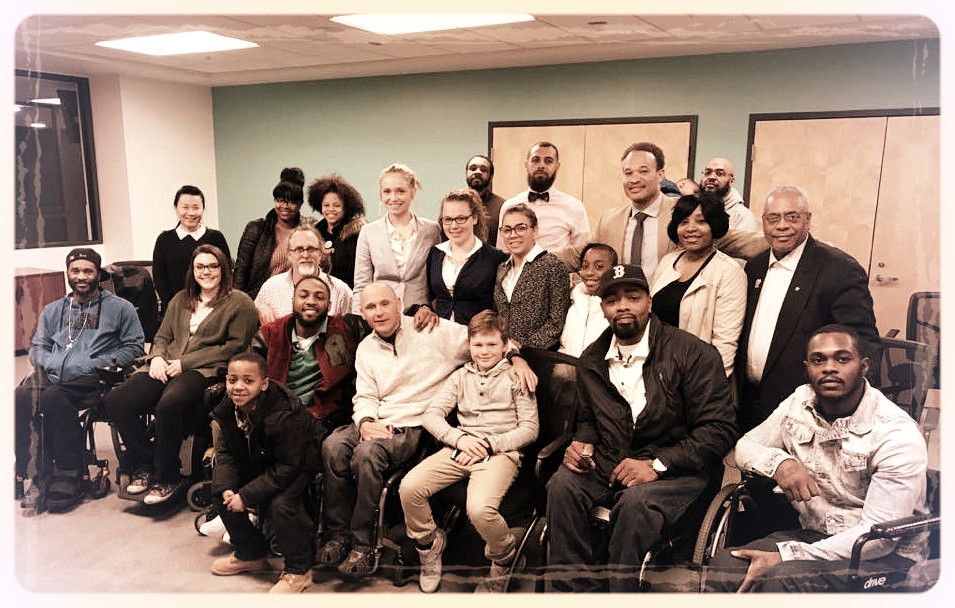Mar 27, 2024
Neuralink’s First Neuralnaut
Sam Maddox
Let’s check in on the news about Neuralink, the Elon Musk startup. Hard to miss the coverage that the company recently implanted one of its devices in the brain of a guy with quadriplegia.
At first all we had to go on was a single Musk tweet announcing the first human implant – purposely obscure, with no details, no facility or clinician named. There wasn’t even a listing with clinicaltrials.gov to describe the procedure or its study endpoints.
I planned to hold off on commenting until there was some more solid validation. But now the recipient of Neuralink’s first brain implant has been identified and he’s talking about the experience. He’s Noland Arbaugh, 29, from Arizona. He had a diving injury in 2016 and has no arm or hand function.

Noland Arbaugh with his family as part of his presentation at the Neuralink offices, from a video posted March 22, 2024 on Noland’s X (Twitter) account.
There are video posts on social media featuring Noland discussing his implant experience; see the first one here and visit X (Twitter) @moddedquad or @neuralink others. He plays video games and chess, sends a post to X, and obviously enjoys the spotlight, embracing with humor his extra-humanoid advantage as a telekinetic cyborg.
The first video has Noland sitting with a Neuralink engineer named Bliss. They shoot the breeze about mind control and learning to use “the force” but don’t try to explain how the thing actually works. (Noland’s brain signals are recorded by an implanted sensor array, transmitted to a computer that decodes them; with training, he is able to modulate brain activity, and thus activate a cursor for computer commands).
In a longer video, Noland appears on stage at the Neuralink offices, describing how he went from applying for the trial, weighing the risks and benefits, to actual brain surgery in five months. He was motivated, undeterred even after reading about test monkeys with Neuralink implants hating them and trying to rip them out of their skulls. He was assured the animals are very well cared for, so no worries.
(Note: the animal welfare issue hasn’t gone away. From Reuters this week: U.S. Rep. Earl Blumenauer (D-Oregon) wrote to the FDA that he was concerned the agency ignored "troubling evidence" of animal testing violations dating back to at least 2019. Said Blumenauer, "These alleged failures to follow standard operating procedures potentially endangered animal welfare and compromised data collection for human trials.")

Noland Arbaugh talking about his experience with the device at the Neuralink offices from a video posted March 22, 2024 on X (Twitter).
Noland says the surgery was easy, just took two hours and he was only in the hospital one day. Once they powered the device up (it has a rechargeable battery), Noland quickly figured out how to use intention to move his wrist to create spikes on the computer monitor. Soon he was able to reliably move a cursor, nailing almost 8000 target hits in a single day.
Musk Effect
We last considered Neuralink and this device three years ago when the company showed a monkey named Pager playing the old school video game Pong using only his brain. The headline de jour included the words “revolutionize healthcare,” the kind of overstatement that instantly triggers hype detection and signifies the outsize role of Musk – there was no news here. Animals with brain chips had already been controlling computers for nearly 20 years.

From my April 26, 2021 piece, Headline Patrol: “Monkey MindPong: Elon Musk & Neuralink’s Latest Could Potentially Revolutionize Healthcare.”
We may be seeing expectational overload again: Quads have been doing what Noland is doing for many years. Ten years ago, Ian Burkhart, a high-level quad with brain chip implant, played Guitar Hero using only his mind.
Ian is a true cybernaut pioneer who had a BCI implant (Blackrock Neurotech’s Utah Array) for 7 ½ years (the implant was surgically removed, without complication, in 2021). He’s excited about the Neuralink device but not because it’s blazingly innovative. Says Ian, “What Neuralink is doing is exciting – but not for doing what’s not been done. They’re doing it in a different way.”
Engineering Upgrades
- The Neuralink array is wireless and cosmetically hidden under the scalp, a major feature upgrade over previous implants that protruded from the skull.
- The new system features over 1000 channels, compared to 96 in Burkhart’s implant. (Note: Blackrock now has 1000+ channel arrays).
- Neuralink’s unique robotic surgical insertion procedure, using a kind of sewing needle to place electrodes into brain tissue, may improve sensitivity, thus making it easier for users to tune thoughts to cursor control.
Give Neuralink some credit for the device. Engineering, good. Neuroscience, so far so-so.
Would Burkhart consider a Neuralink implant? “Yes. I’d like to know more about it, but it does have a lot of what I would be looking for in a BCI device.”
Burkhart thinks the BCI field benefits from Neurlink’s efforts. “The field sees this as a rising tide lifts all boats. Personally, I hope this keeps the pressure on all the companies to innovate and translate their research to get devices into all people who could benefit.”
There still isn’t enough information for anyone outside the Neuralink orbit to know what’s up with this implant device. The company may resist transparency and outside scientific scrutiny, but at some point Musk and his engineers will have to very publicly prove to device regulators and the BCI marketplace that their system is safe, that it doesn’t cause problems in the long term, and that quads will even want them put in their brains.
Find out more. Contact Neuralink to see a promo video or join a patient registry if you qualify for the study (note: you must have limited or no ability to use both hands due to cervical SCI or amyotrophic lateral sclerosis (ALS); you must also be available for follow ups for six years).

















